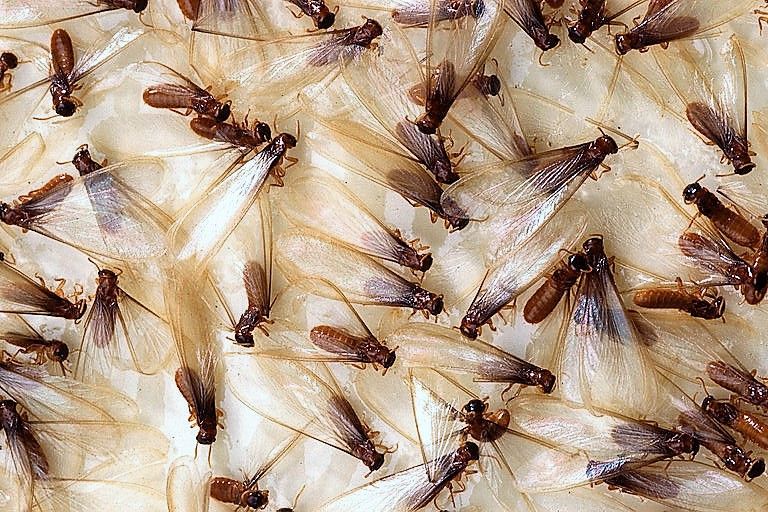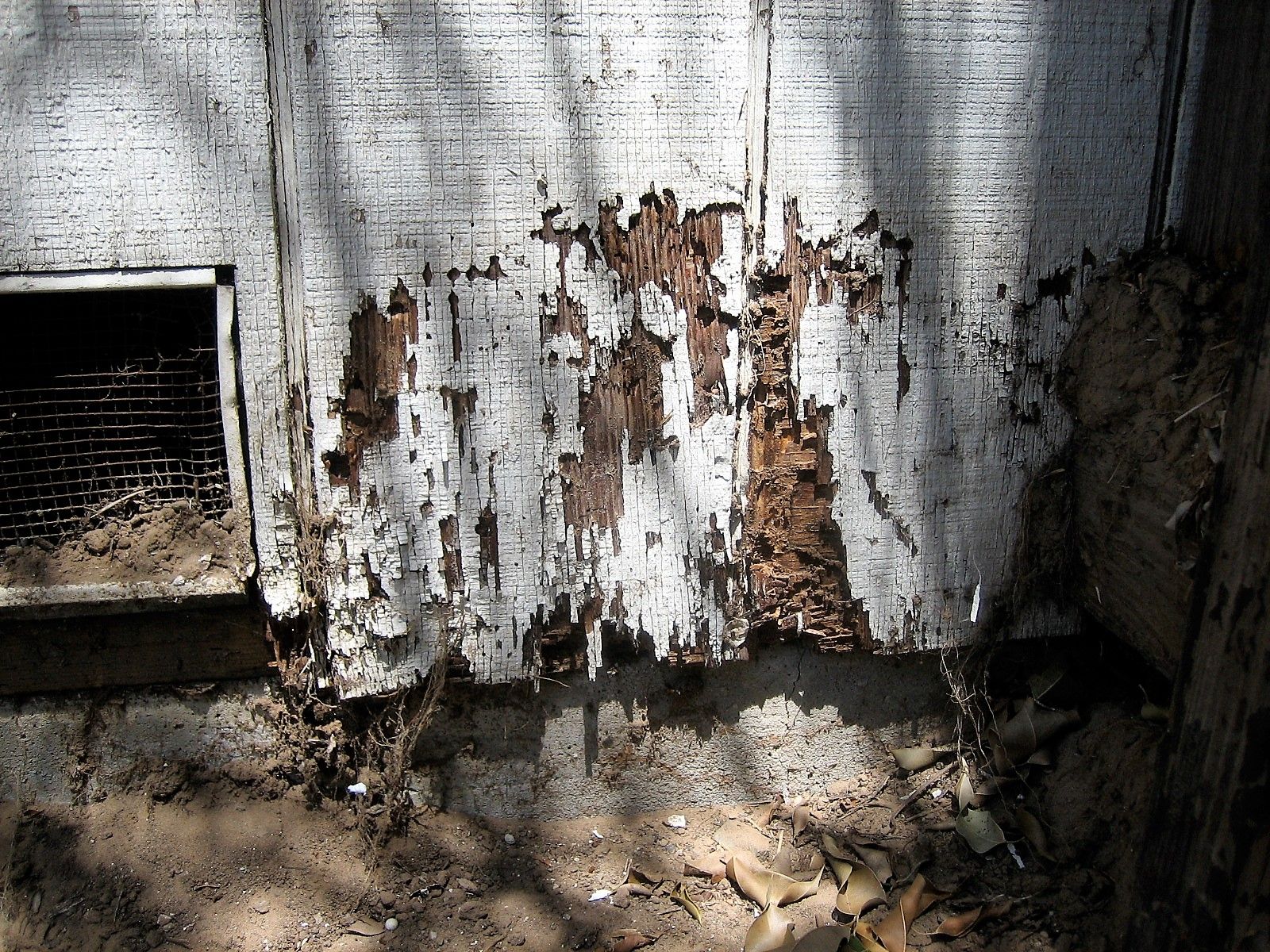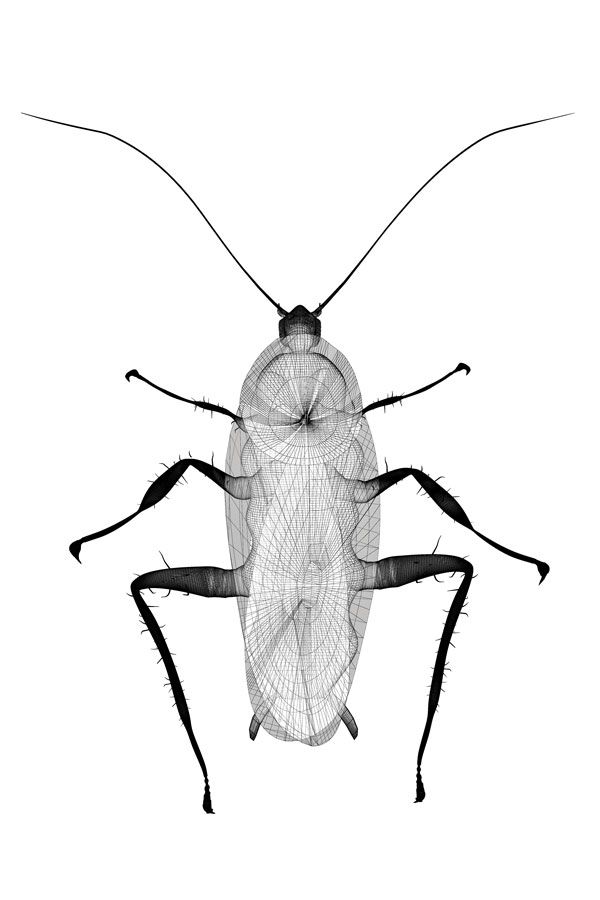If you live in or near New Orleans, you've likely experienced one or more of these things:
- You stumble to the kitchen to prepare your morning coffee, only to discover a half-eaten package of blueberry Pop-Tarts and a trail of tiny droppings across your counter, which almost seem to form an outline of Trump's face.
- You sleep on the couch to avoid the creepy crawly things you're sure are in your bed.
- Coming home after dark, you blindly step on a giant roach, and, along with the pop heard around the world that still echoes in your ears, you can't get the sticky bug mire off your favorite shoes.
- You watch your cat transform into a feline yoga master or a kitty contortionist from scratching at all those hard-to-reach fleas.
- You're minding your own business watching Netflix one night when, suddenly, swarming termites start charging, kamikaze-style, towards the glow emanating from your television.
If the bugs in your house have watched more episodes of Tiger King than you have, or you have the feeling that you're never truly home alone, never fear. You're in good company—literally. Most of us regularly share our homes and our city with roaches, rodents, bedbugs, fleas, termites, or all of the above. Pests in the Big Easy are no joke. In fact, New Orleans is kind of like Disneyland for vermin. The infrastructure, conditions, and terrain all combine to make this a regular pest's paradise—a bug's happiest place on earth.
Joe Martin, specialist and entomologist (aka bug whisperer) with Terminix Pest Control, explains, "Everywhere has a pest problem, but New Orleans is such a major pest city because these buildings were built a long time ago, so you have a lot of cracks and crevices. You have a lot of restaurants, a lot of trash. You're right by the river, and they like moist areas. It's hot outside. They have water, they have food, they have shelter. It's the perfect habitat."
If you really want to know what's eating you, read on.

Eating You Out of House and Home: Termites
In New Orleans, there are three things that are certain: death, taxes, and termites.
Termites are bad here. If the cloud of bugs hovering around the streetlight in the Walmart parking lot or your porch floodlight isn't enough of an indication, and even if you're one of the lucky ones who can't put your foot through your floorboards, the facts still prove it. We have a termite problem in this town.
There are two main types of termites in New Orleans: drywood termites and Formosan termites. As the name suggests, drywood termites live in (and eat) dry wood, but they are much scarcer and wussier than Formosan termites. Formosan termites, on the other hand, are the majority of the termites that you'll encounter, and they're the ones you really need to worry about. Considered "subterranean," wood-hungry Formosan termites are supposed to live underground, yet they are perfectly happy to migrate to your living room walls, even if you happen to live on the top floor and stories above ground-level.
On an aggressor level, the difference between Formosan and drywood termites is kind of like the difference between going to war with Russia and Iceland. Formosan termites are more prevalent, invasive, destructive, and problematic than any other form of termite out there. Although they prefer to feast on the soft part of wood, known as cellulose—their "filet mignon," as Martin puts it—they have been known to chew through wire and gnaw through PVC pipe. And they dig tunnels the length of a football field or longer.
"Formosan subterranean termites are defined as the most destructive subterranean termites in the world, wherever they occur," says Martin. "It was estimated that New Orleans would have $300 million worth of damages [from these termites] annually."

These destroyers have massive colonies and far outnumber their less common and more easy-going drywood cousins. Martin explains that a single building in New Orleans could be infested with as many as 60 million Formosans at a time. That's approximately the entire population of Italy.
Hiding out in shipping crates arriving at the port of New Orleans, Formosan termites came over from the Pacific during World War II. And, like so many visitors to the city, they liked it here so much that they decided to stay. Fast-forward many decades now, and these termite transplants are taking over the city.
Yes, New Orleans is in the top five on a lot of lists: best food city, most haunted city, best city for tourism. But, hands down, New Orleans wins the undisputed number-one prize as the most termite-infested locale.
"A couple of cities may compete with us, but New Orleans possibly has the worst Formosan termite problem in the world," Martin says. "The New Orleans Mosquito and Termite Control Board estimated that about 30 to 50 percent of trees in New Orleans are infested with termites." It's so bad here that, according to Terminix, it's not a question of if, but when you, too, will end up with your wooden siding and rafters serving as a termite hors d'oeuvre.
"If you were in a room, and you said, 'Raise your hand if you know someone who's had termite damage in their house,' I'd be willing to bet that the majority, if not all the people in the room, would raise their hands," Martin says.
House-Swarming Parties
According to Martin, prime termite swarming season begins around Mother's Day and starts to taper off at the end of June. So, come May, just as you are honoring Mom with mimosas at Sunday brunch, the termites pay their respects as well by choosing then to start coming out of the woodwork.
Martin explains that it takes five to seven years for a colony of termites to be healthy and well-established enough to swarm. But once they get to that point, and if the conditions are favorable, the happy worker termites will receive a signal to sprout wings and fly away from the nest en masse. These throngs of flying termites are called swarmers or, officially, alates. They leave the colony behind and go in search of a mate to hook up with and start a new colony, flying towards the light in an instinctual pattern known as the Light Compass Reaction.
"When those termites swarm, 50 percent of them are male, and 50 percent of them are female," says Martin. "So it's a little dance party around the light."
A short-lived party at that—it's really their last hurrah, the termites' last tango. Almost every one of those swarmers you see fluttering around your floor lamp will drop their wings in a matter of hours and shrivel up and die in a day or less, leaving wings and dead termite debris strewn throughout your house, which, like glitter after Mardi Gras, you'll still find lingering around months later. The queen termite, on the other hand, can live for several years, which would make her approximately 187 in termite years.
Crawling All Over Each Other: Roaches

The nauseating creature crawling up your wall, scampering out from under the sink, or hanging out in your Cheetos bag is likely either an American cockroach—that behemoth bug that nightmares are made of, which we refer to as a palmetto bug—or a German cockroach.
Martin explains that American cockroaches live outside, in woodpiles or mulch, and usually come inside only for a meal or some moisture. That's why you often see them under the dishwasher or around plumbing, where dampness collects. They also fly.
American roaches, or palmetto bugs, produce egg sacks known as oothecas, with approximately 10 to 15 eggs in each sack. These roaches are rather prolific, with a procreation rate that puts bunnies to shame and makes TLC's Duggar family seem, well, sterile: "They can produce 22 egg sacks in their lifetime," Martin says. "That's over 336 baby roaches."
German cockroaches are smaller and live inside, "in restaurants or people's kitchens," says Martin. "Those are the types of roaches you may see in your pantry or your refrigerator and in small cracks and crevices."
Roaches feed on "organic matter," which could be your leftover Chinese takeout or the grease dried onto the stove. They also eat wood, because, in the most disturbing family tree since the Gambinos, roaches are actually the ancestors of termites. And as if the gross-out factor on these bugs isn't already high enough, if roaches can't make a buffet out of your edible castoffs, they'll eat each other's poop just to stay alive.
Everyone in New Orleans has had their fair share of roaches, but if your home environment feels like you took a page out of Kafka's Metamorphosis, try not to take it personally. Martin says that even the cleanest of tenants can still end up with resident roaches, since they often stow away in boxes, bags, or other packaging that we all bring home. But, he assures us, keeping your place tidy and free of crumbs and crud is still a sure way to starve them out and reduce a roach problem. He also recommends roach baits.
"Roaches are destructive. They carry pathogens. Having roaches is not good. And yeah, they're gross," says Martin. "I mean, I like bugs, but I would think that the average person probably doesn't want a roach crawling on them. Especially the ones that fly."

